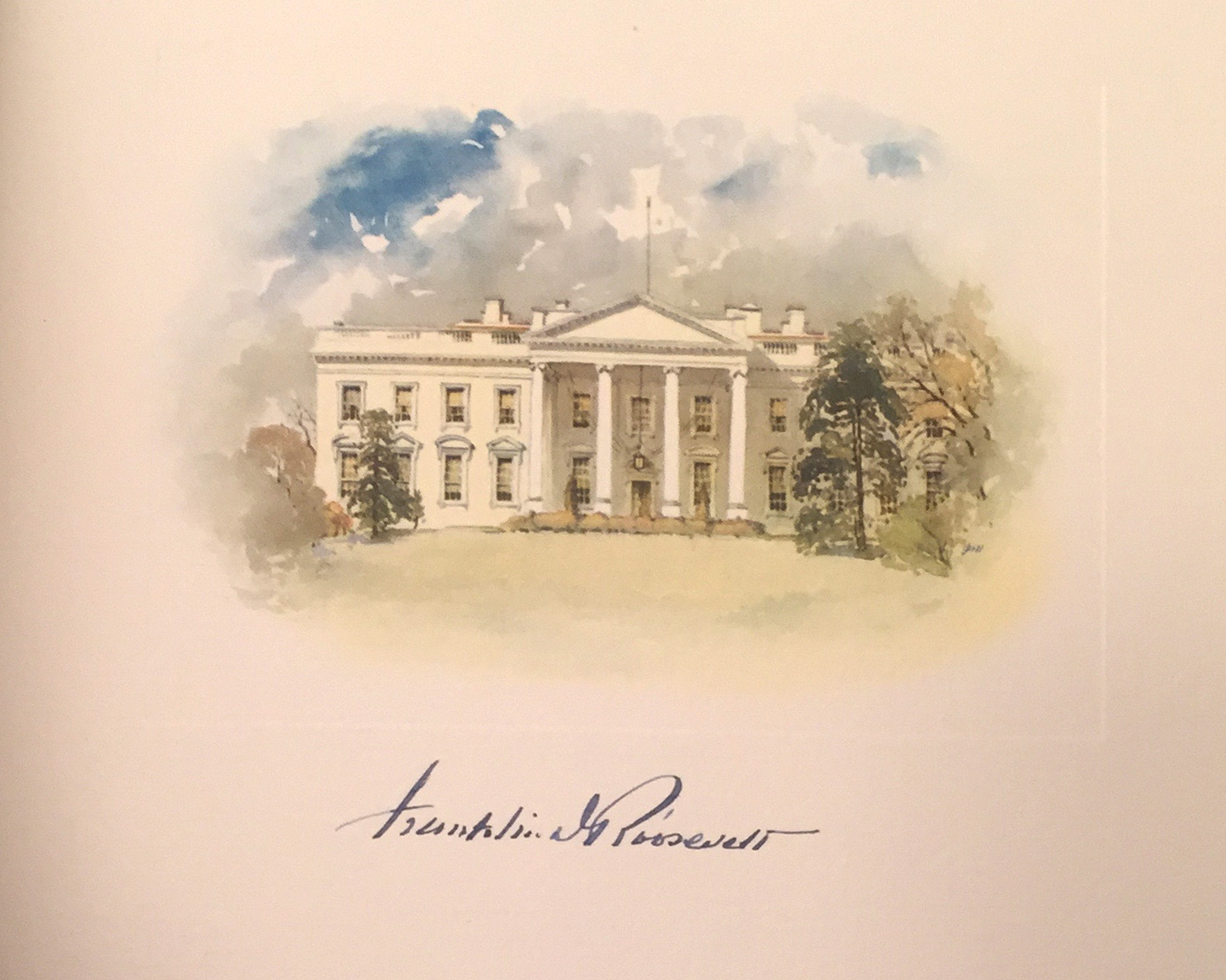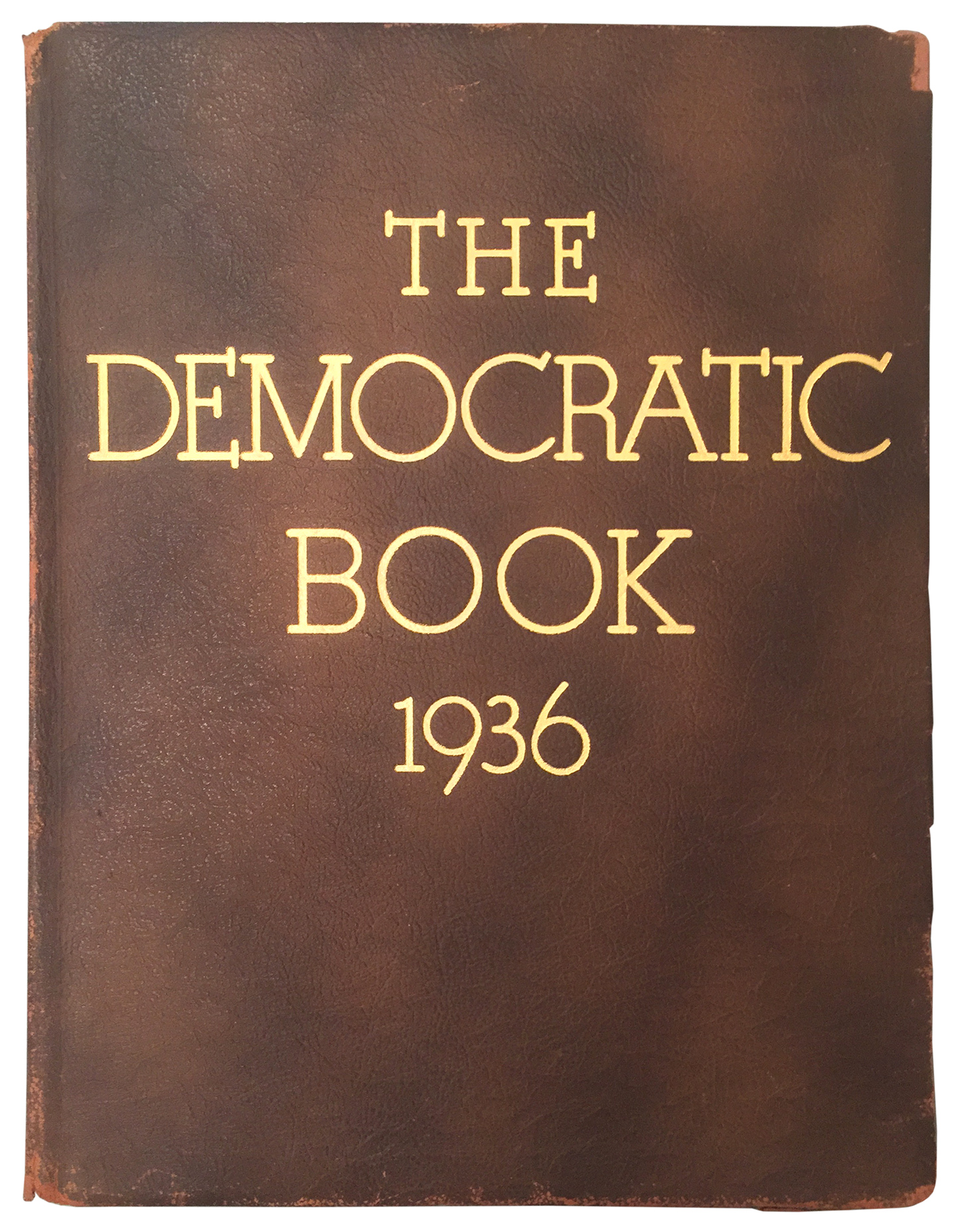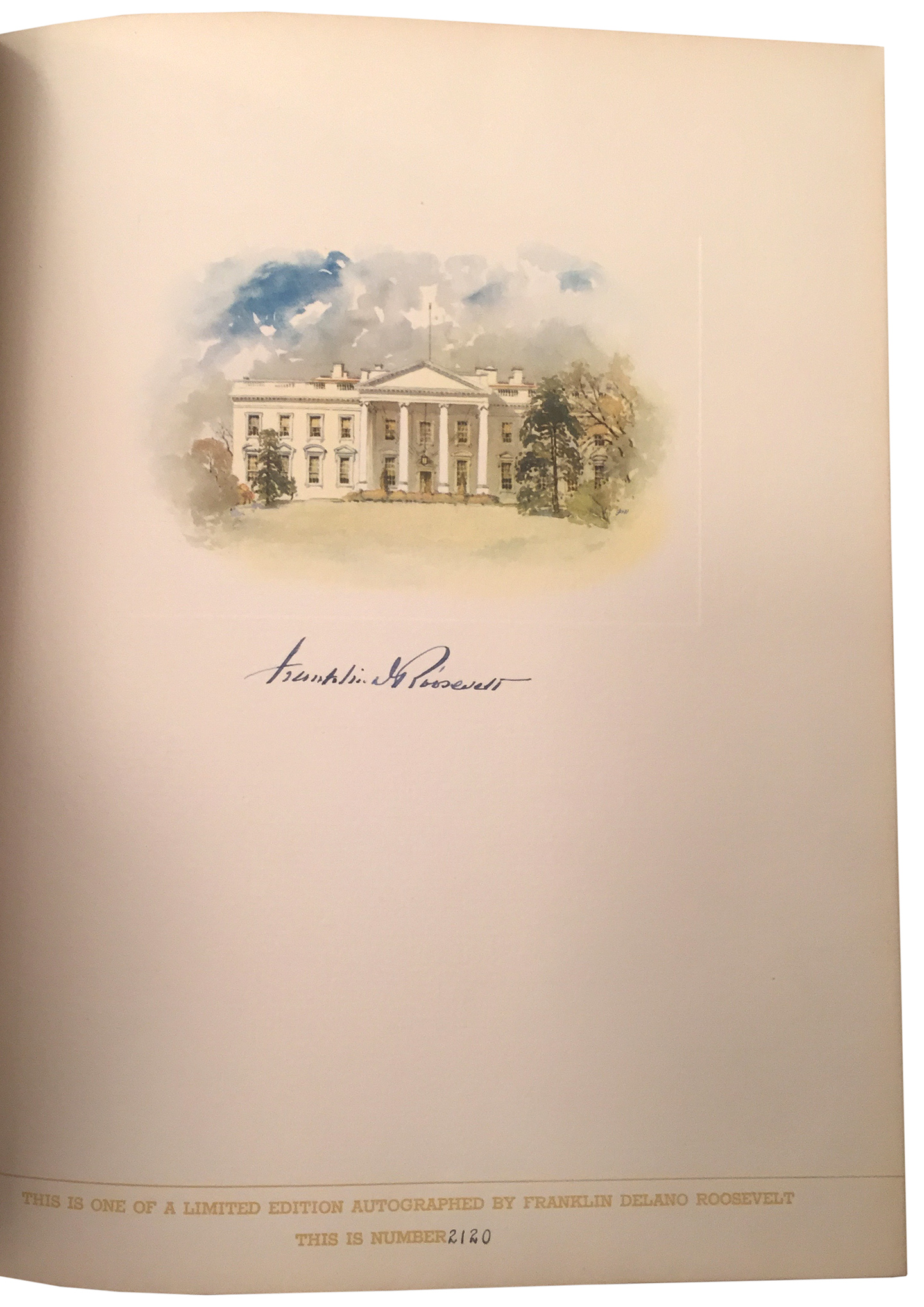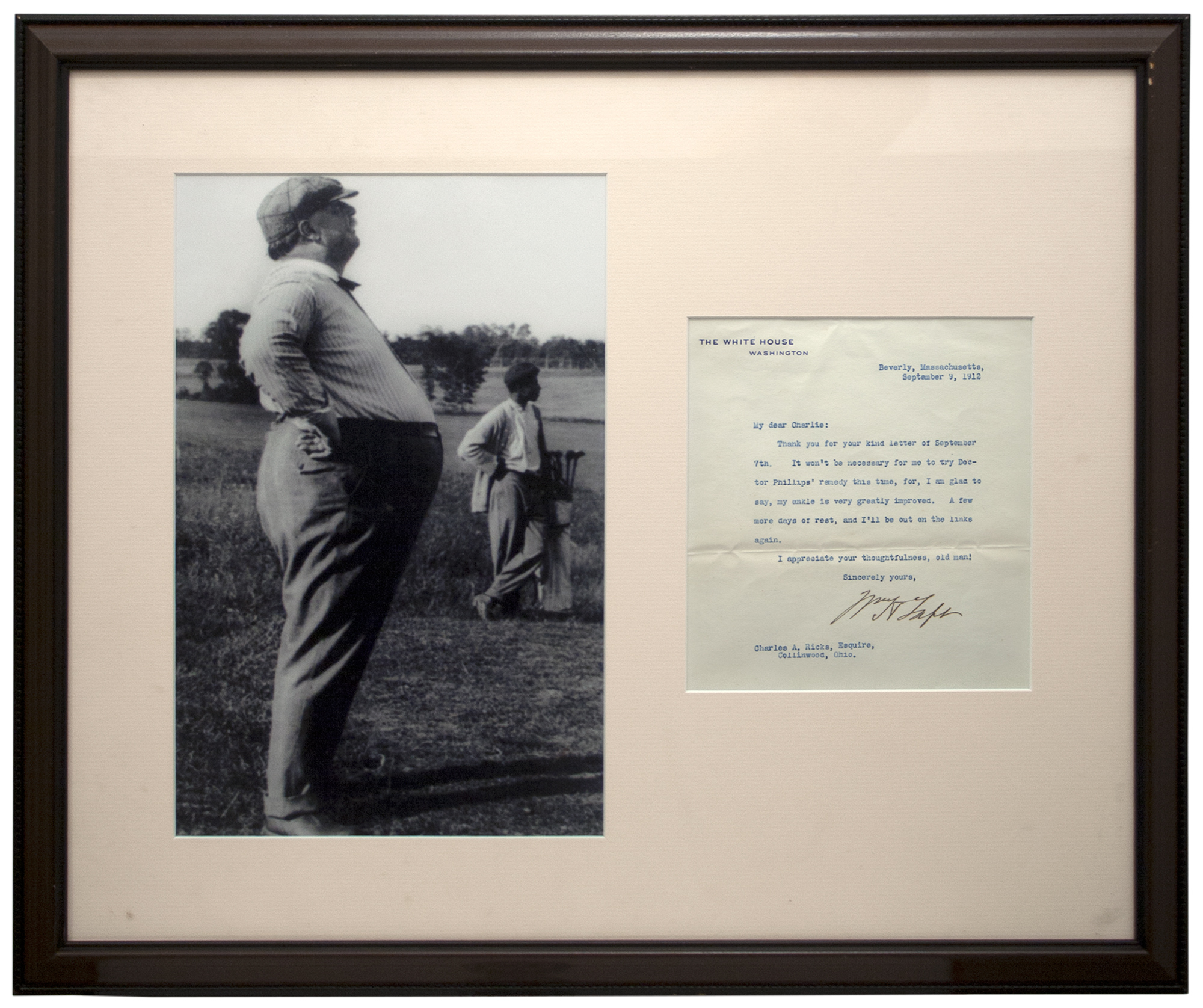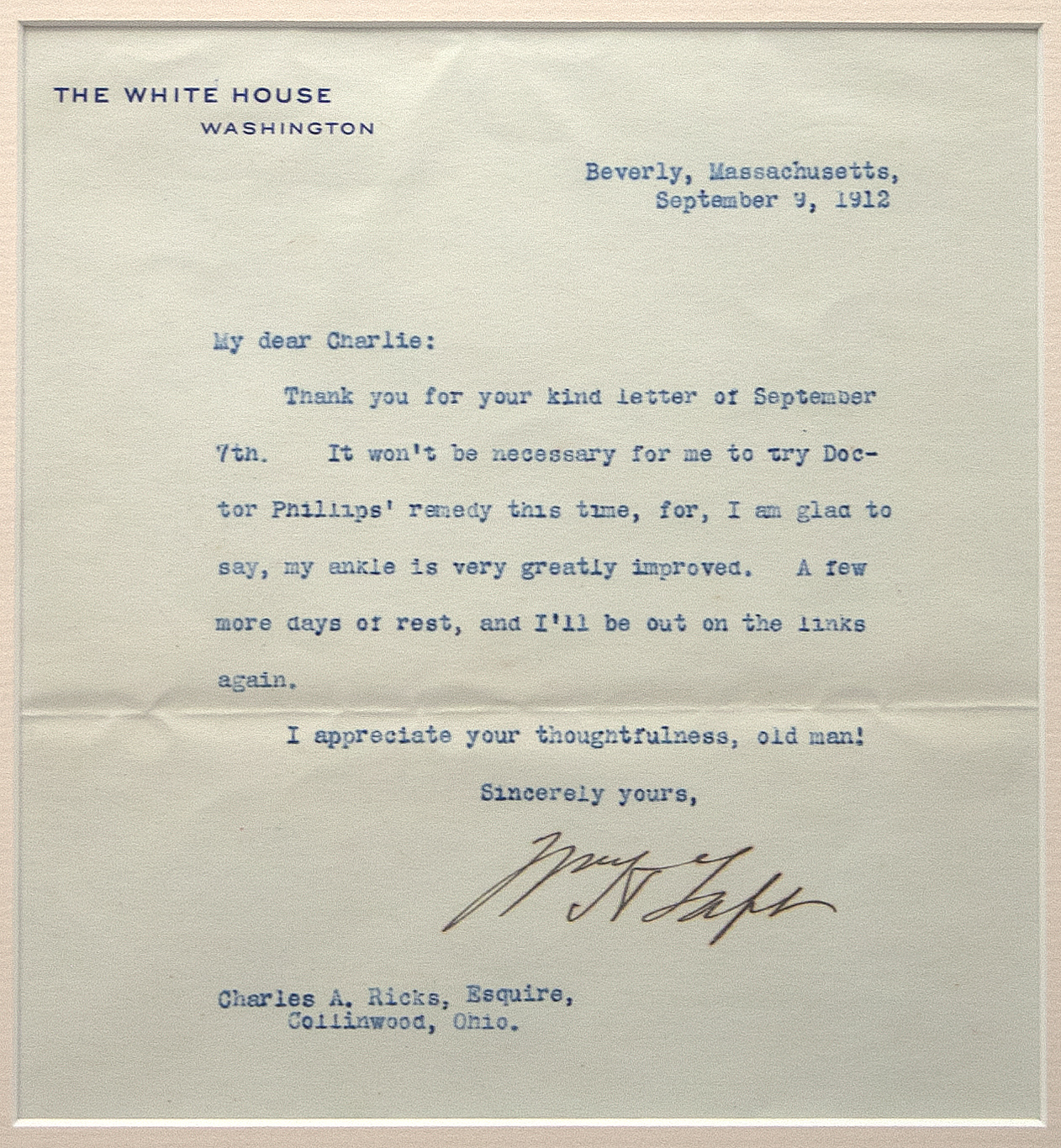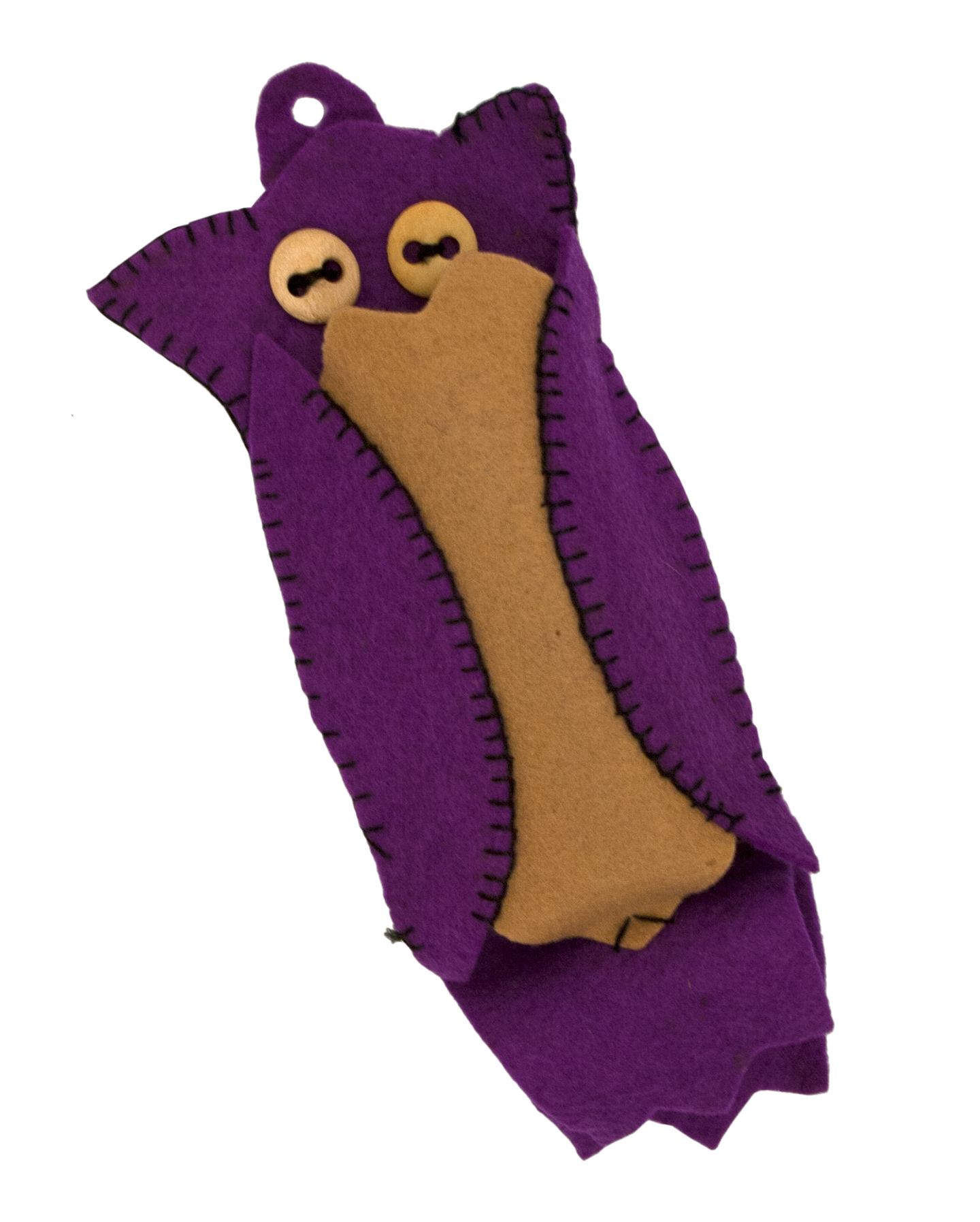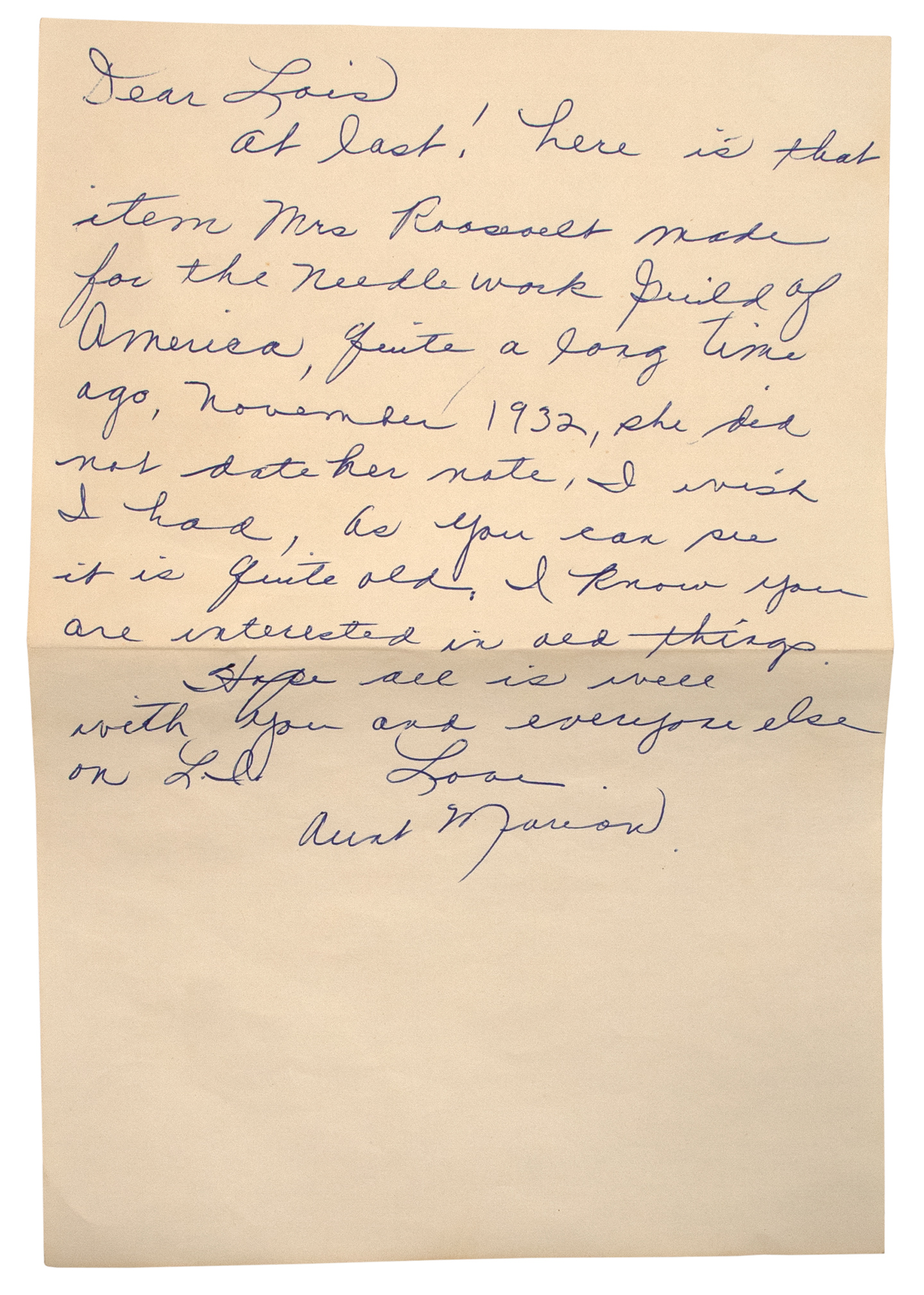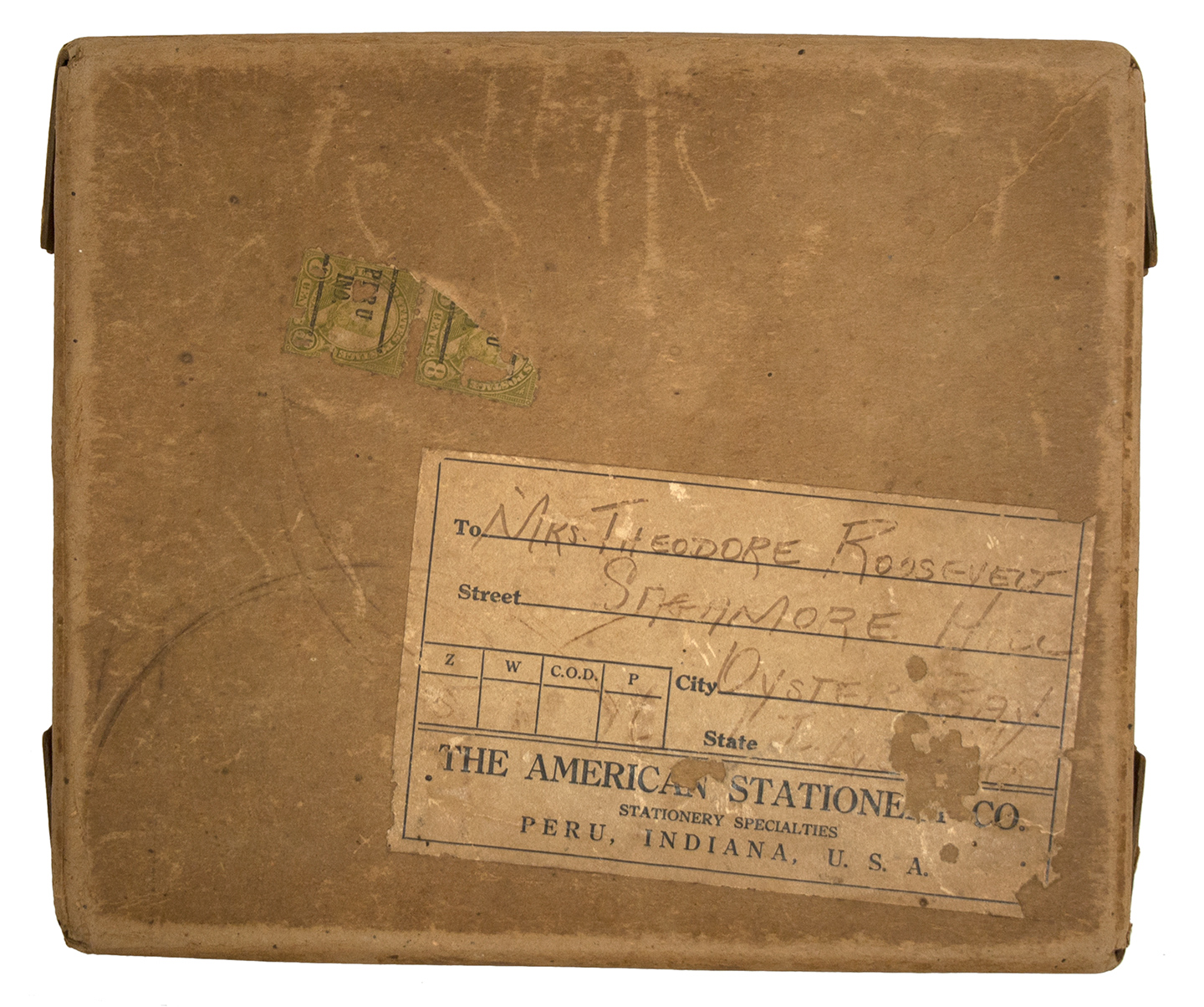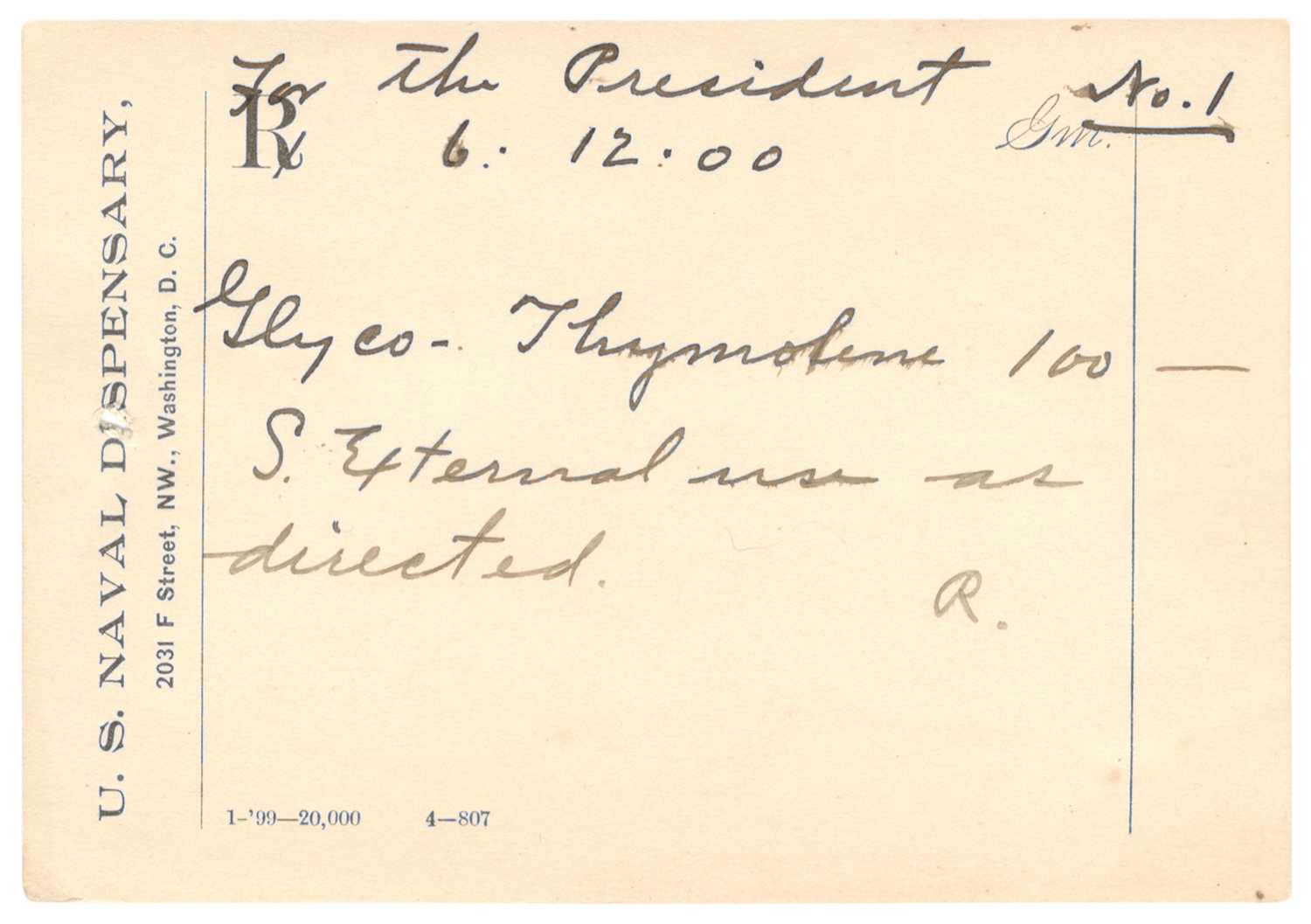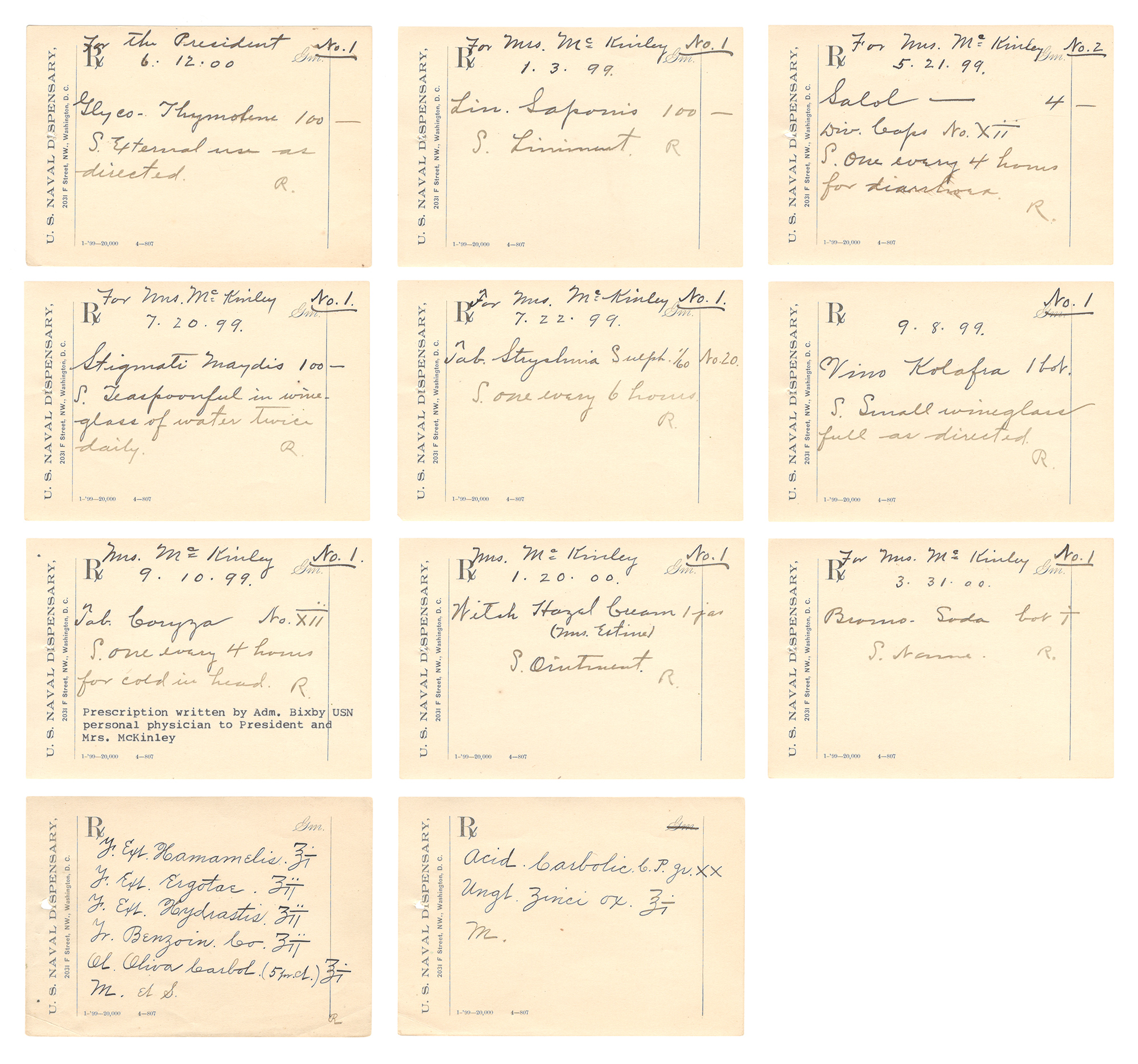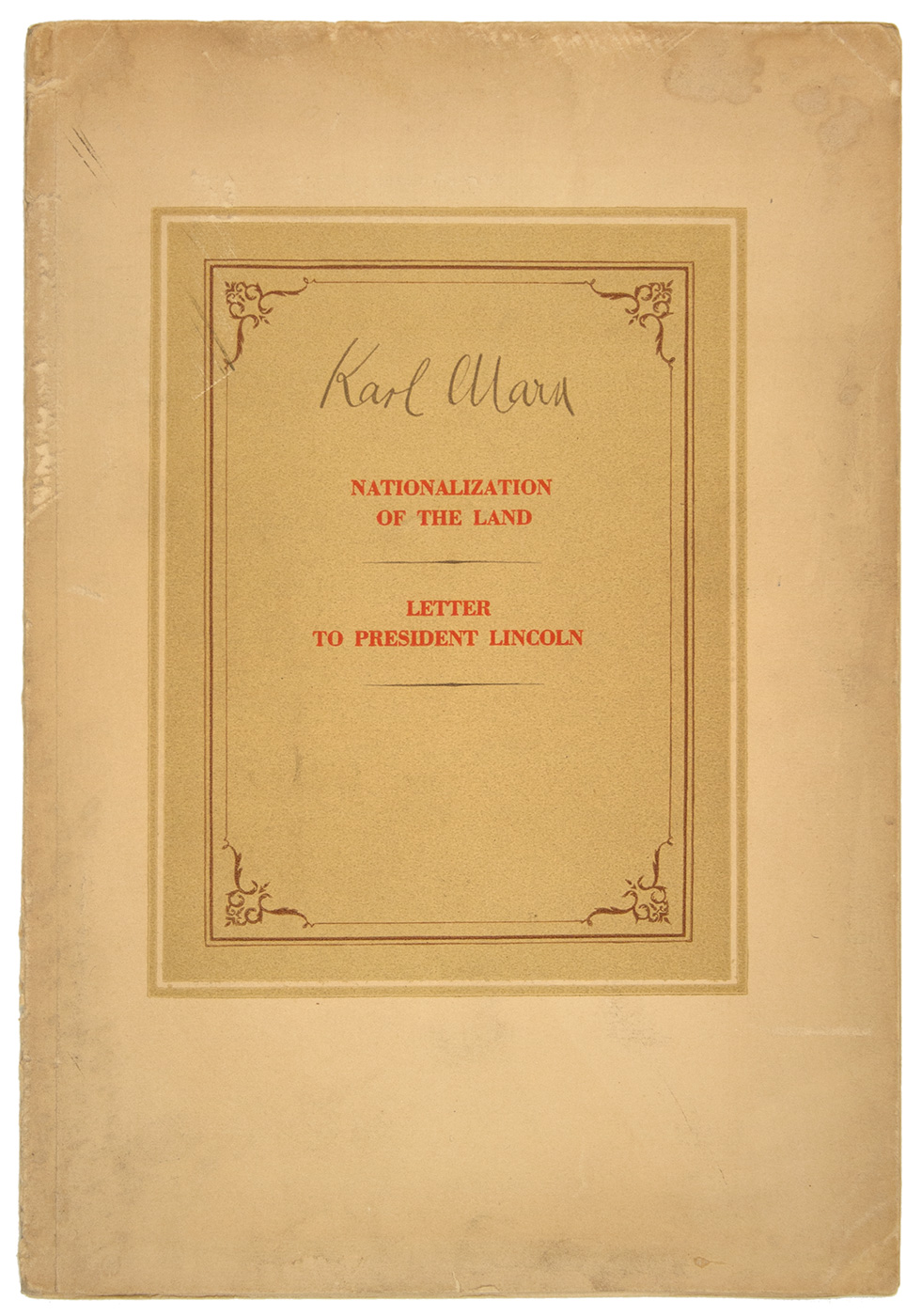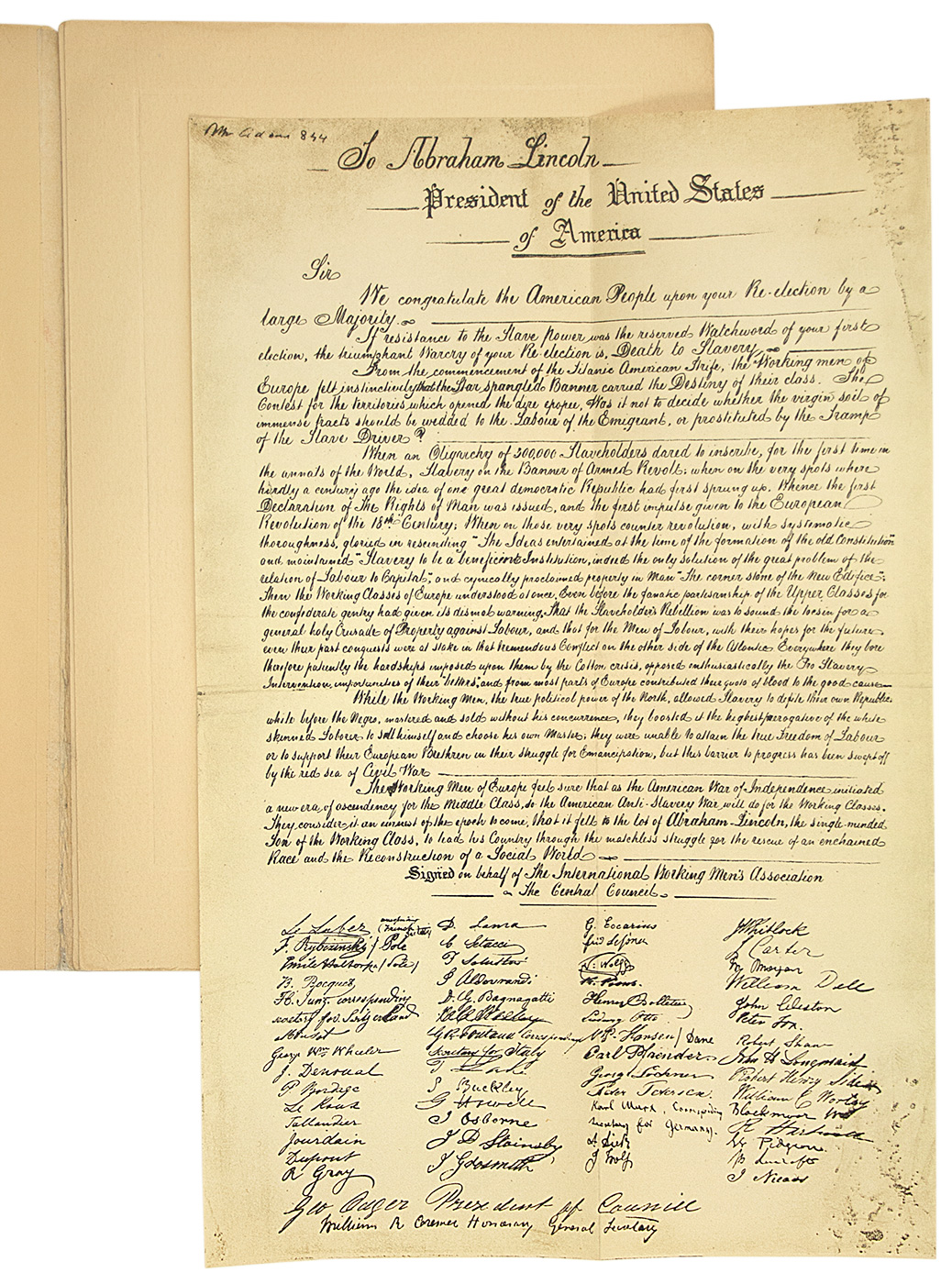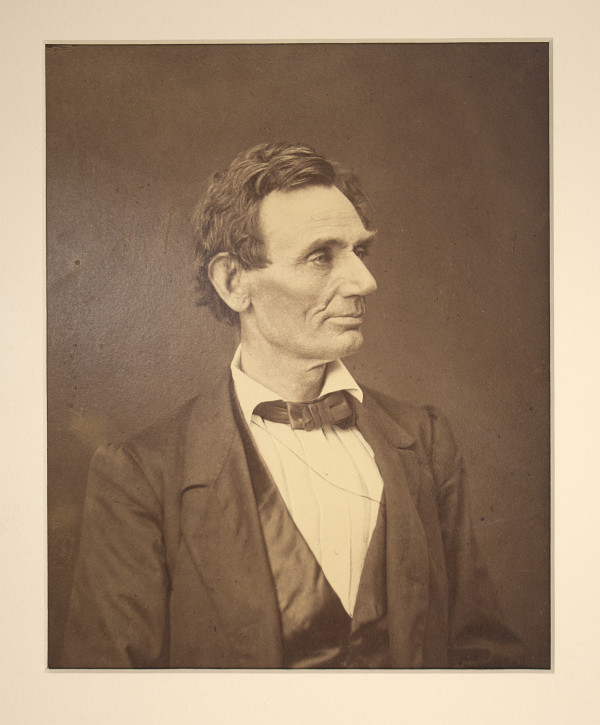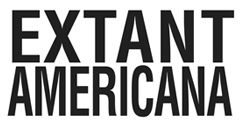Only months after he lost his son Quentin, shot down by the German planes over France, Theodore Roosevelt consoles a woman on the death of her relative, killed by an artillery shell on the Western Front.
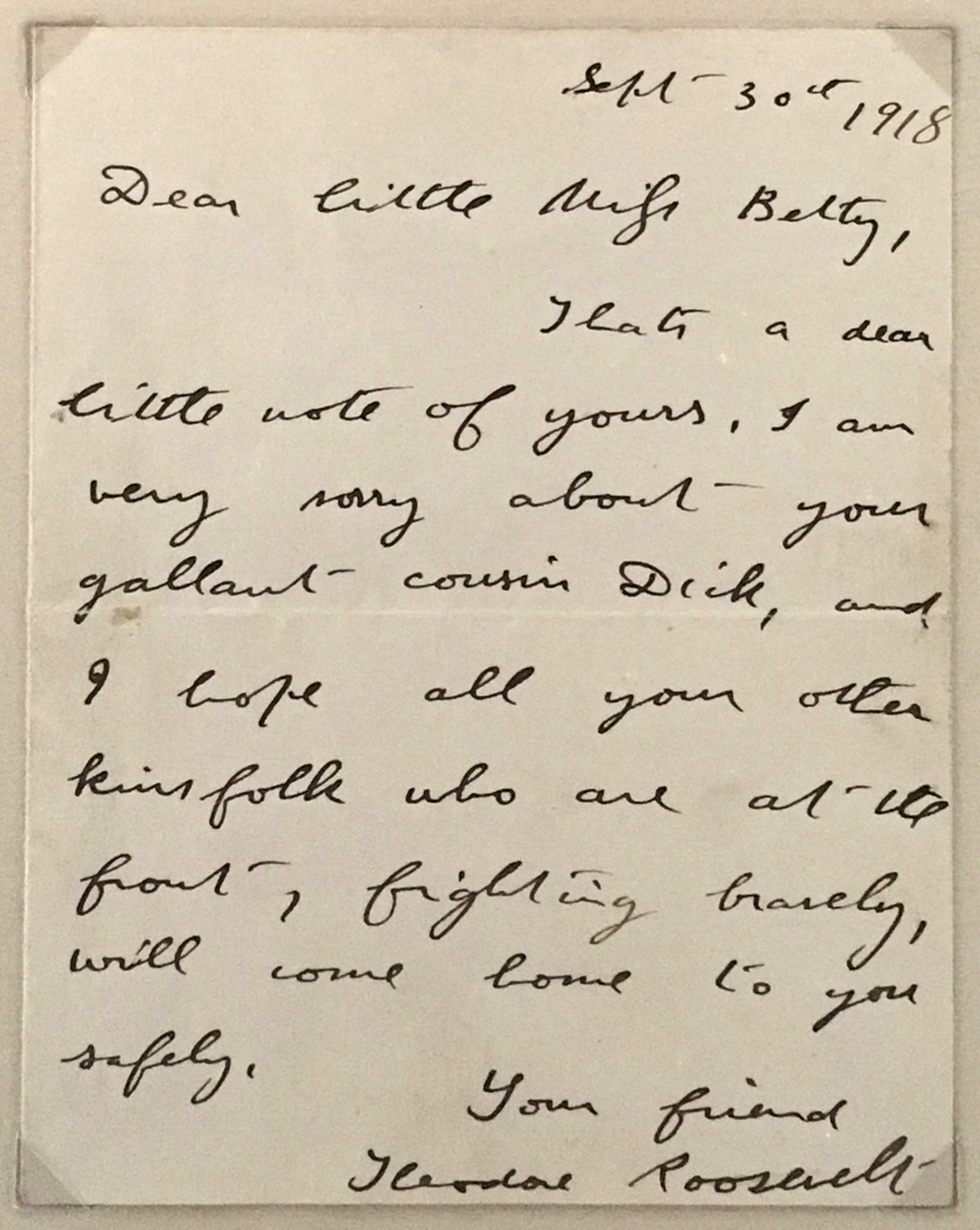 Theodore ROOSEVELT (1858-1919) Fine content Autograph Letter Signed, “Theodore Roosevelt” 1 page, 165 x 128 mm (5 x 6 1/2 in.) [Columbus, Ohio], 30 September 1918, addressed in his hand on the accompanying transmittal envelope to “Miss Betty Trudeau” in Columbus. Matted and framed with a transcript of the original letter from Truseau to Roosevelt and a 1907 Harris and Ewing photograph, a bust portrait of Roosevelt. 215 x 165 mm. (6 1/2 x 8 1/2 in) (sight).
Theodore ROOSEVELT (1858-1919) Fine content Autograph Letter Signed, “Theodore Roosevelt” 1 page, 165 x 128 mm (5 x 6 1/2 in.) [Columbus, Ohio], 30 September 1918, addressed in his hand on the accompanying transmittal envelope to “Miss Betty Trudeau” in Columbus. Matted and framed with a transcript of the original letter from Truseau to Roosevelt and a 1907 Harris and Ewing photograph, a bust portrait of Roosevelt. 215 x 165 mm. (6 1/2 x 8 1/2 in) (sight).
A touching letter to a young woman, who had offered her condolences to the former President for the recent death of his son Quentin, an Army Air Service pilot who had been shot down over France. According to an anonymous relative, who’s account of the exchange is framed together with Roosevelt’s letter, accomplished on Ohio State University Department of Botany letterhead, that Betty had written the letter to Roosevelt, “who was here today to open the Liberty Loan campaign. It was her own idea and she carried it out without suggestion from anyone – even taking the letter to the Deshler Hotel so it would be delivered.”
 Below, the writer proceeds to transcribe the contents of Betty’s letter: “The reason i am writing to you is because i have loved you ever since I was old enough to realize. I am so sorry about your son. I have two ungles [sic] in the war and my cousin Dick was killed at C[h]ateau Thierry. He was only 19 and was big and had rosey [sic] cheecks. He was hit by a shell and blown all to bits. I wish you would come to our house dinner and we would have all the children in the neighborhood like a big birthday party. Mother says I could have you if you will come.”
Below, the writer proceeds to transcribe the contents of Betty’s letter: “The reason i am writing to you is because i have loved you ever since I was old enough to realize. I am so sorry about your son. I have two ungles [sic] in the war and my cousin Dick was killed at C[h]ateau Thierry. He was only 19 and was big and had rosey [sic] cheecks. He was hit by a shell and blown all to bits. I wish you would come to our house dinner and we would have all the children in the neighborhood like a big birthday party. Mother says I could have you if you will come.”
Her heartfelt letter elicited the following response from Roosevelt the same day: “Dear little Miss Betty, That’s a dear note of yours, I am very sorry about your gallant cousin Dick, and I hope all you other kinsfolk who are at the front, fighting bravely, will come tome to you safely. Your friend Theodore Roosevelt“.
The news of Quentin’s death deeply wounded the former President, who after war erupted in Europe in 1914 had staunchly advocated U.S. involvement in the conflict. With Archie Roosevelt already wounded, it was more than either he, or Edith, could bear. Feeling responsible for urging his sons to go into harm’s way, he wrote, “It is rather awful to know ath he paid with his life, and that my other sons may pay with their lives, to try to put in practice what I preached.”1 While in Columbus, Roosevelt was greeted by Justice E. W. McCormick, whose son, Lt. Vaughn R. McCormick had been Quentin Roosevelt’s commander in the 22nd Aero Squadron. Tragically, Lt. McCormick had also killed serving in France on September 12, 1918—only two weeks before.2

His loss did nothing to deter his resolve to prosecute the war vigorously. Roosevelt had been in the midst of a multi city speaking tour promoting the Liberty Loan, including Baltimore, Columbus, Kansas City, and Wichita before returning to New York. As he had in Baltimore the evening beforehand, Roosevelt urged “universal obligatory service” for both men and women, as a means of preparedness as well as the deportation of conscientious objectors employing the reasoning that only those who were wiling to die for the country were fit to live here. Roosevelt also cited the lack of American preparedness before she entered the war, arguing that “‘the war would have been over ninety days after this country entered it…'”3
Expected folds, some minor but normal loss to top margin of transmittal envelope, else very good condition.
(EXA 6002) $5,750
_________
1 Kathleen Dalton, Theodore Roosevelt: a Strenuous Life (2007), 504.
2 Plain Dealer, Cleveland, 2 Oct. 1918, 13.
3 New York Times, 1 October 1918, 8.
